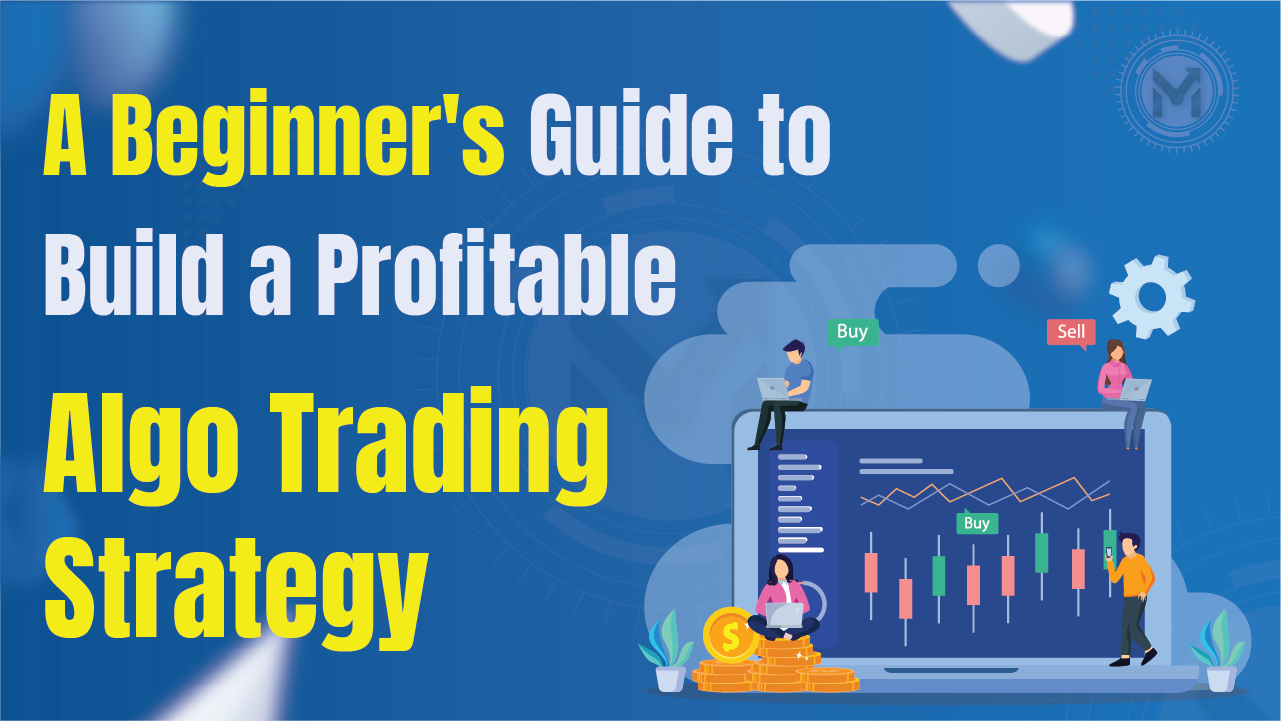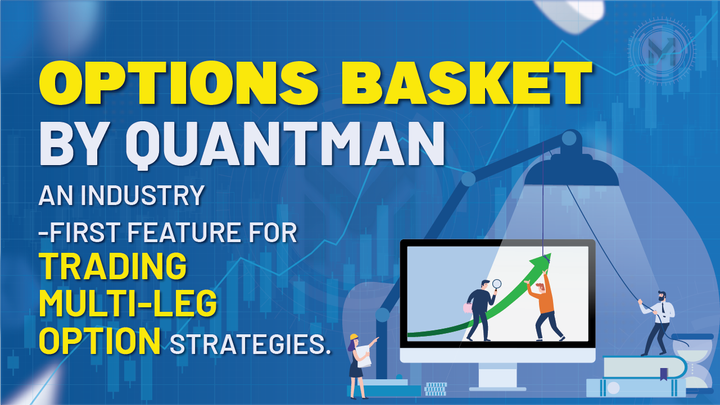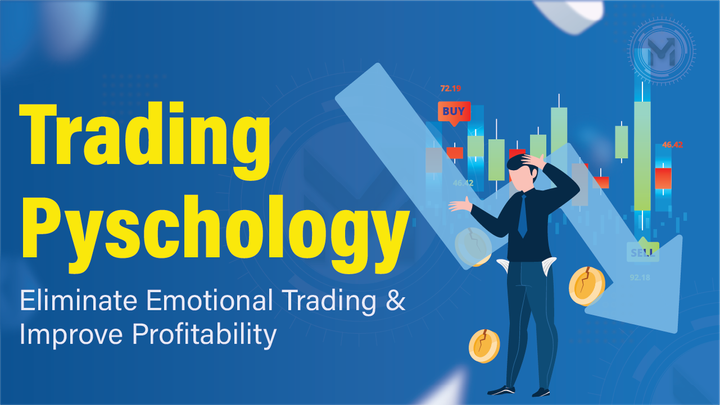A Beginner's Guide to Build a Profitable Algo Trading Strategy
This guide outlines how to create a successful algorithmic trading strategy, focusing on speed, efficiency, and emotional control. It includes steps like setting trading goals, choosing a platform like QuantMan, developing and testing strategies, and using risk management techniques.

Algo trading or algorithmic trading has transformed the landscape of financial markets, enabling traders to execute strategies with speed, precision, and reduced emotional bias. For beginners in trading, delving into this realm might seem daunting, but with the right approach and tools, it's entirely achievable. This guide provides a structured pathway to help you develop and implement a profitable algorithmic trading strategy.
What is Algo Trading - Understanding the Core
Algorithmic trading involves using computer algorithms to automate trading decisions based on predefined criteria. These trading algorithms can process vast amounts of market data, identify trading opportunities, and execute trades at speeds unattainable by manual traders. The primary advantages include:
- Speed and Efficiency: Algorithms can execute trades in milliseconds.
- Elimination of Emotional Bias: Automated strategies follow set rules, removing human emotions from trading decisions.
- Backtesting Capabilities: Traders can test trading strategies against historical data to assess their viability.
Types of Algo Trading Strategy
Although there may be various trading strategies, it is essential to understand these strategy categories to start developing a profitable strategy on your own. Here is the list of strategies.
- Trend Following: You will be trading on the basis of the indicators like RSI, MACD, moving averages or other indicators that determine the direction and strength of a trend.
- Arbitrage: This involves the concurrent buying and selling of the same stock in different markets intending to get a risk-free profit.
- Mean Reversion: This is another trading strategy that assumes an asset's price will return to its average after deviating from its historical average. In simple terms, if a stock price goes unusually high, it is expected to decrease, and if it goes unusually low, it is expected to increase, eventually returning to its typical range.
- Market Making: It is a trading strategy where the trader quotes both buying and selling prices, which helps create liquidity in the market.
Step-by-Step Guide to Build Your First Profitable Algo Trading Strategy

The following are the major factors that matter in building your first profitable algo trading strategy.
1. Define Your Trading Objectives
Before diving into strategy development, clarify your trading goals. Are you aiming for short-term gains, long-term growth, or risk mitigation? Your objectives will guide the design of your trading algorithm and influence decisions like asset selection, trading frequency, and risk tolerance.
2. Choose a Suitable Trading Platform
Selecting the right platform is crucial. For beginners, platforms that offer user-friendly interfaces and robust features are ideal. QuantMan is a notable option, especially in the Indian market. It allows users to create and test trading strategies without any coding knowledge. Key features include:
- Drag-and-Drop Strategy Builder: Design quantitative trading strategies using a visual interface.
- Backtesting Tools: Test strategies against historical trading data.
- Broker Integration: Seamless connection with major brokers like Zerodha, Angel One, and 35 more.
- Risk Management Features: Implement trailing stop-loss and take-profit levels to manage risk effectively.
3. Develop a Simple Trading Strategy
Start with a straightforward method to grasp the fundamentals. A commonly used technical analysis approach is the Moving Average Crossover strategy:
- Short-Term Moving Average (e.g., 15-day): Tracks recent price movements.
- Long-Term Moving Average (e.g., 50-day): Reflects the overall trend.
Trading Signal:
- Buy: When the short-term average crosses above the long-term average - Golden Cross.
- Sell: When the short-term average crosses below the long-term average - Death Cross.
This strategy helps in identifying potential entry and exit points based on market trends.
4. Backtest Your Strategy
Backtesting involves testing your trading strategy using historical data to evaluate its performance. This helps identify potential flaws and refine your approach. When backtesting:
- Use Comprehensive Data: Ensure the data covers various market conditions.
- Evaluate Key Metrics: Analyze returns, drawdowns, and risk-adjusted performance.
- Avoid Overfitting: Ensure the strategy generalizes well to unseen data.
5. Implement Risk Management Techniques
Effective risk management is vital to protect your trading capital. Incorporate the following:
- Position Sizing: Determine the amount of capital to allocate per trade.
- Stop-Loss Orders: Set predetermined levels to limit potential losses.
- Take-Profit Orders: Define profit targets to secure gains.
- Diversification: Spread investments across different assets to mitigate risk.
6. Paper Trade Before Going Live
Paper trading allows you to test your algorithm in real-time market conditions without risking actual money. This step helps in:
- Identifying Practical Issues: Spotting discrepancies between backtest results and live performance.
- Gaining Confidence: Familiarizing yourself with the platform and trading environment.
- Fine-Tuning the Strategy: Making necessary adjustments based on real-time feedback.
7. Deploy and Monitor Your Trading System
Once confident in your strategy's performance, deploy it in a live trading environment. Start with a small capital allocation and monitor its performance closely. Regularly review and adjust the strategy to adapt to changing market trends.
Leveraging QuantMan for Algorithmic Trading
QuantMan stands out as a beginner-friendly platform that simplifies the process of algorithmic trading. Its features cater to both novice and experienced traders:
- No-Code Strategy Development: Build algorithmic strategies without programming.
- Comprehensive Backtesting: Evaluate performance with six years of historical data.
- Real-Time Execution: Execute trades with a single click.
- Cloud-Based Access: Trade from anywhere without software installation.
By using QuantMan, beginners can focus on strategy development and market analysis without getting bogged down by technical complexities.
Final Thoughts
Embarking on the journey of algorithmic trading for beginners is both exciting and rewarding. By following a structured approach that includes defining objectives, choosing the right platform, developing and backtesting a strategy, implementing risk controls, and monitoring performance, you can build a reliable and scalable trading system. Platforms like QuantMan streamline this journey, making algo trading accessible to a broader audience.
Remember, success lies in continuous learning, adaptation, and disciplined risk management. With the right mindset and tools, you can confidently navigate the world of quantitative trading and work toward your financial goals.



